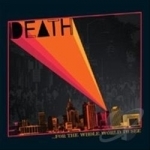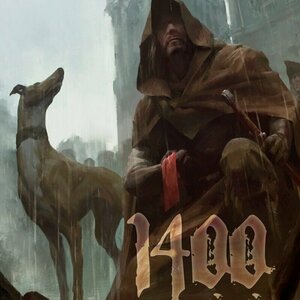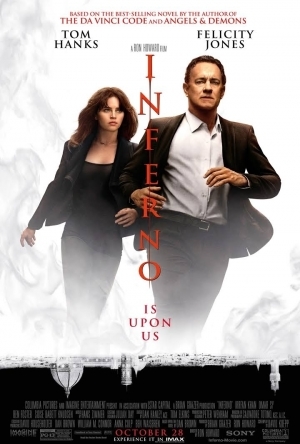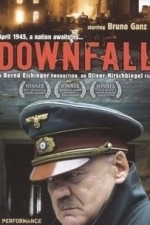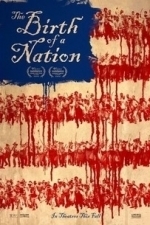James Dean Bradfield recommended ...For the Whole World to See by Death in Music (curated)

Barbados Offline Map Travel Guide
Travel and Navigation
App
Welcome to Barbados! - a charismatic island with a unique charm and warmth, miles of powdery, white...

Exacto - Photo Cut | Background Eraser
Photo & Video
App
Quickly remove unwanted backgrounds or create razor-sharp photo cutouts with the Pen Selection Tool....
Purple Phoenix Games (2266 KP) rated Chronicles of Crime: 1400 in Tabletop Games
Oct 21, 2020
Chronicles of Crime: 1400 (which I shall shorten to 1400 for the duration of this preview) is an app-assisted campaign, murder-infested, cooperative storytelling game for one to four players. If you are familiar with the original Chronicles of Crime, you already know how to play 1400. However, should ye be of the uninitiated, allow me to set the stage for this incredible gaming experience.
DISCLAIMER: We were provided a copy of this game for the purposes of this review. This is a retail copy of the game, so what you see in these photos is exactly what would be received in your box. I do not intend to cover every single rule included in the rulebook, but will describe the overall game flow and major rule set so that our readers may get a sense of how the game plays. For more in depth rules, you may purchase a copy online or from your FLGS. -T
To setup, place the Evidence Board in the middle of the table and the Home Location Board near. Keep all the decks of cards nearby (shuffled or unshuffled, whatever is your liking) as well as the alphabetically-labeled Location Boards. Fire up the Chronicles of Crime app, choose “1400,” and then choose the case you would like to play. The app will walk players through the additional setup steps for the case being played. For this solo preview I played through The Missing Pages case. Also, to be completely upfront I got a 95/110 for a final score, but no big deal.
How do I explain this game succinctly? Well, each of the cases will involve players traveling to different Location Boards and meeting Characters at these locations. Many cases will be involving several Special Items and, new for the 1400 version, Vision Cards that may assist players in putting the case into focus. These Vision Cards do not really give the story away or anything, but are merely a vague framework of possible factors.
By using the app and scanning the QR codes on the boards and cards players will be learning about the case, viewing the scene of the crime(s), inspecting items, chatting up locals for information, and also new for 1400: consulting with the goodest boi dog companion! The dog, Perceval, assists the knight (the players) in cases by sniffing items. A word of caution, though, when you play this game do NOT have Perceval sniff any items until you are completely done with a location because he may drag you to another completely different location right away before you were ready. Not that it happened to me, mind you… okay, it did.
Play will continue not so much in “rounds” but until the players have enough evidence and a good handle on the situation enough to return Home to report to their family members all the details of the crime(s) by scanning answers to their questions about the case. The app then assesses the accuracy of the answers and outputs a score. For reference, though I did receive 95/110 on my first play of 1400 I did only receive a 70/100 on my first runthrough of the original Chronicles of Crime, so playing this style of game several times seems to improve how one plays.
Components. As most items in the box of the game are card or cardboard-based, and all really great quality, I will speak on other component items. Firstly, the art and art style throughout the game is simply stunning. I mean look at that Perceval card! And I already raved about the box cover in my opening statement. This art really speaks to me and it says, “I’m gorgeous.”
The app. I have only great things to say about the app. It’s the same app that you would use for original Chronicles of Crime, and operates the exact same way. For me it has been flawless to use and just a joy to bring technology into the gaming world, even for a game set in the year 1400. I am obviously no purist game enthusiast, as I enjoy these hybrid model games. Once you play with the app you will see how ingenious a system it really is. The app coupled with the nondescript cards and other components in the game make for infinite storytelling possibilities that can only be limited by creativity and time constraints. I love the components in the box AND the marvelous app.
Gameplay for me is also just glorious. I love being able to sit down, setup the game, and let the app tell me what’s going on. So what should I do first? Oh, let’s mosey on down here to this Location Board and drum up some information. Ooh I found an Item! I should bring it back to my Family Location Board and ask my merchant sister about it. Hmm, it’s religious in nature? Okay then, my Monkle (monk uncle) will know something about it. Okay, time to go back to that location and speak with the other person who was in there. OH CRAP, I wasted too much (in game) time and now that other person is gone?! Uh oh, I better stop messing around here…
It’s just amazing, and I love this family of games. I am so stoked to delve more into 1400 and discover more shenanigans happening in Paris. Perceval and I are out to solve all the cases and beg for more. If you are looking for a game that uses a hybrid board game/app model, are a fan of this era in history, or just want to have a really great experience playing a game, I urge you to consider Chronicles of Crime: 1400. It has everything I love in a unique game and I just can’t get enough!
Gareth von Kallenbach (980 KP) rated Inferno (2016) in Movies
Jul 15, 2019
Tom Hanks has reprised his role as Robert Langdon (this time with an appropriate haircut) and once again he travels around to beautiful locations of European art and architecture with a young woman by his side, trying to solve a series of clues in order to stop a billionaire madman who believes humanity is a parasite and his plague inferno is the cure. If this sounds like a film you have seen before, it is because you have. In the other two movies that have come before it
Once again, audiences will enjoy being whisked around to see beautiful cities, art, and architecture to solve historical literary clues as the film plays out like a late middle ages travel lesson. These are all good things.
The bad is that during the first half of the film, Robert Langdon has amnesia due to a blow to the head. He cannot remember much which of what he was doing, which makes him a less compelling character. Throughout the series of films, Langdon has used his “dizzying intellect” to solve clues the brightest minds could not solve. In Inferno, that “super power” is taken away and we are left with an average, middle aged man, who is somehow able to solve impossible puzzles and clues while being chased by seedy underground characters and the world health organization. Who for the purposes of this film, seem to have become the FBI/CIA in one. This setup does not work and makes for a boring first half of the film Eventually Langdon regains his memory and the film picks up a bit from there, but for some it might be too late.
As far as the performances go, Tom Hanks delivers a watchable, likable performance, much to his credit considering that the character of Robert Langdon is a relatively boring protagonist. Meanwhile Ben Foster plays the somewhat forgettable billionaire madman (Bertrand Zobrist) in a somewhat forgettable way. It is a shame because perhaps if we had a chance to understand the nuance of his character, like I assume can be done in the books, he would have felt like a more compelling character and caused us to think if he was to be on the right side of history. Unfortunately, any nuance from the book does not translate well to the film adaptation. But not all is lost. For me, the bright spot of the film was Felicity Jones who plays the gifted doctor Sienna Brooks. Brooks, who in helping Langdon with his injury, gets swept up into game for the fate of the world. In her performance, Felicity Jones shows a transition of her emotional resonance throughout the film as her character develops and we get to understand her more, for better or worse. I am excited to see Jones continue to grow in her career and look forward to seeing her this holiday’s Star Wars Story: Rouge One. She has the ability to carry a film, let’s hope she is given the opportunity to do so.
In the end, Inferno is not a terrible film, but it is not very memorable either. Unlike the two films before it, Robert Langdon is handcuffed by an injury that doesn’t allow him to use his intellect that made him compelling before Couple that with what seems like an inspector gadget plot, where the bad guy leave a series of clues to foil his own master plan, and you end up with a “Meh” film.
RəX Regent (349 KP) rated Downfall (Der Untergang) (2004) in Movies
Feb 19, 2019
Told in a straight forward manner, we are given a portrait of not only Adolf Hitler himself, played perfectly by Bruno Ganz, who manages to humanize him without ever apologising for his heinous acts, but also those close to him. Shown through the young eyes of his final secretary, Traudl Junge (Alexandra Maria Lara), we are given a picture of what The Third Reich was to those who believed in it as well as what it had become for those who would suffer at it bloody hands.
Directed by Hirschbiegel to put us, the audience in the anterooms with these monsters, we are placed into a complex environment, edgy, atmospheric and most of all, real, as we witness noble acts of patriotism, conscience and pure, despicable horror, none less so that Magda Geobells, with the full consent of her husband, Joseph, first drugging, then murdering their six children as they slept, rather than “let them live in a world without national socialism.”
The only redeeming factors were their eventual suicides and in terms of the film, their first rate performances throughout this harrowing scene. Corinna Harfouch, who portrays Magda manages to portray this evil woman yet convey the emotion which was subdued deep beneath the surface. No small feat to allow such a fleeting glimpse of humanity during such and inhuman act.
But the same must be said Bruno Ganz, who manages to portray Hitler with such humanity; whilst showing us the true nature of his monstrosities, highlighting that the REAL monsters live among us and can seduce us at any time, any where, especially when we are vulnerable.
During one of the film’s early scenes, Hitler and Albert Speer (Heino Ferch), his Armaments Minister, discussing his vision for The Third Reich as he looks over a model of the new Germany which would be built after he won the war, a Germany without department stores, instead focusing on art, literature and culture.
Surely a noble goal, but as we all know, this cultural hub would have been built at an unacceptable cost, mainly with the blood of those who Hitler and his cohorts deemed to be inferior.
This is one of many clever methods used to convey a fair portrait of Hitler and The Third Reich. To demonstrate how bad they were, you first have to show impartiality, pointing out the good in what they do, play devil’s advocate as it were. Because whether we like it or not, evil motives are often built upon decent goals.
But as this film demonstrates, as Hitler shows his destine for anyone, even his own people, who will not give their lives for HIS vision of Germany, his Third Reich was being eaten away by a cancer of his own making, a Germany rotting from the very top.
Downfall is without a doubt one of the best World War 2 films which I have ever seen, delivering a compelling and immersive look behind the scenes of one of the most important defeats in modern history.
But being British and having to follow this with subtitles, which was great as watching this in its native German only adds to the experience, it can be a bit difficult to keep up with every plot machination, as we spend two and half hours reading about troop deployments, tactics and the philosophy of the Third Reich as we are presented with such atmospheric work, but if you can keep up with but the text and visuals, this is one hell of an education for those who do not know and an immersive masterpiece for those who follow WW2 history.
Hazel (1853 KP) rated The Forgotten Summer in Books
Dec 14, 2018
Is the truth something you really want to know? Jane Cambon has the perfect husband and spends her life travelling from their flat in London to Luc’s family estate in the south of France. Despite the hostility from Luc’s mother, Clarisse Cambon, Jane loves spending time amongst the workers in the vineyard and the olive groves. However, a tragic event causes Jane to question how well she really new her husband.
<i>The Forgotten Summer </i>by Carol Drinkwater captures the southern France climate in such a way that readers will wish to go there themselves. But for Jane it becomes a place of grief and tension as Clarisse’s aggression only increases, bringing back memories of the summer when Jane was fourteen. Not only that, there is the enigma of Jane’s husband, a filmmaker. What was he filming? Why did her keep it secret? What happened during his early years in Algeria? And, most importantly, who is Annabelle?
Not knowing the answers to many questions keeps the reader engaged in the narrative. Slowly, issues are resolved, but some answers are not uncovered until the closing of the novel. After about two thirds of the book it is possible to guess the truth about Luc’s close kept secret, and it is almost annoying that Jane is blind to it.
Drinkwater has put a lot of time and effort into <i>The Forgotten Summer</i>. The amount of research she went through to keep it as factual as possible must have been phenomenal. From reading this book we learn a little about the Algerian War of Independence – something that is glossed over in French history – and the art of winemaking: both equally interesting, particularly the former, which most readers will not have heard of.
An issue that I had with this story was the way Jane was portrayed. I kept imagining her as a younger woman even though it had been explained that she was in her late forties. There was nothing in her description or personality that fitted a middle aged character. This may also be due to the way Clarisse treated Jane: as if she were incompetent and untrustworthy.
<i>The Forgotten Summer </i>is an ideal book for fans of Victoria Hislop, particularly if you also enjoy reading about southern European countries. It is engaging and exciting with a handful of lovely characters for you to admire. With its air of mystery, this book will be hard for you to put down.
Gareth von Kallenbach (980 KP) rated The Birth of a Nation (2016) in Movies
Jul 15, 2019
Nate Parker’s The Birth of a Nation tells a full story of Nat Turner and does not simply rely on the revolt to convey his message of a call for equality and fighting injustice. It is emblematic of resistance to the many sins this nation has committed. The film and story are a punch to the gut reminding Americans that there is much left unfinished with respect to telling the full story of slavery and American history as a whole. There is much of our past that we must reconcile with no matter how uncomfortable. Parker’s film demonstrates the power film has as historical record and permitting audiences to have a greater idea and picture of the past.
The Birth of A Nation allows audiences to become consumed with the horrors of slavery, but it is not limited to that aspect. It humanizes the slaves and demonstrates cultural aspects and relationships that have often gone ignored or overlooked with previous films. It does not rely on sensationalizing events in order to drive the points home. There is subtlety and honesty in the portrayal of the events and circumstances.
This is a film that will have audiences speechless at the end as the come to terms with their emotions about events as they unfold and coming to terms with what the witnessed onscreen. There is nothing that can prepare audiences for this film. It is a work of art that you cannot help but feel compelled to reflect on what you witnessed.
There are those who will not see the film due to the subject matter. There are others who won’t see it because of the sexual assault allegations against Nate Parker. There are many who won’t see it out of a pure lack of interest. Regardless of your stance, this is a film that needs to be seen. It is essential to telling a more complete story about America.

Berlin Marco Polo Handbook
Book
For advice you can trust, look no further than Marco Polo. The Berlin Marco Polo Handbook offers...

Lonely Planet Australia
Lonely Planet, Brett Atkinson, Meg Worby and Kate Armstrong
Book
Lonely Planet Australia is your passport to the most relevant, up-to-date advice on what to see and...
